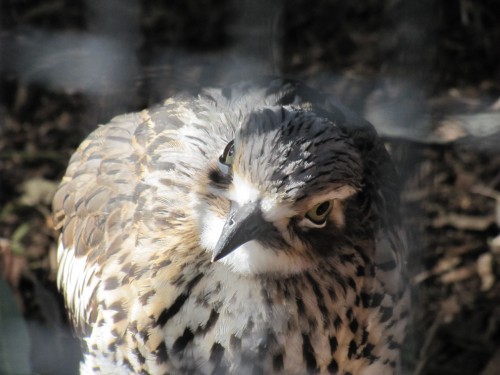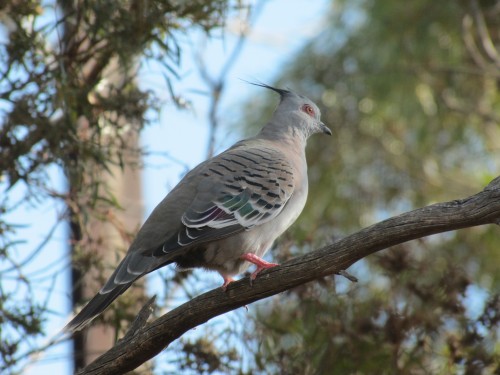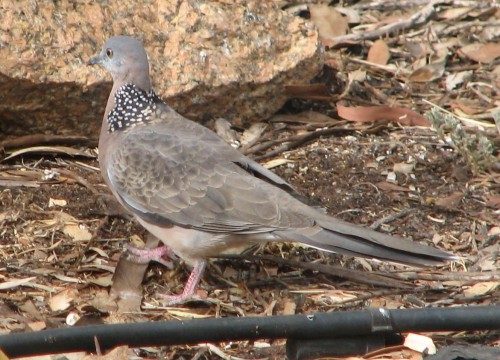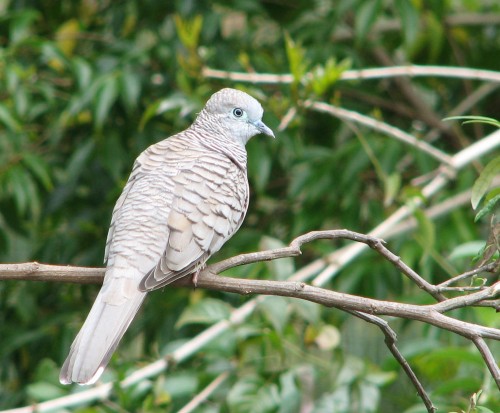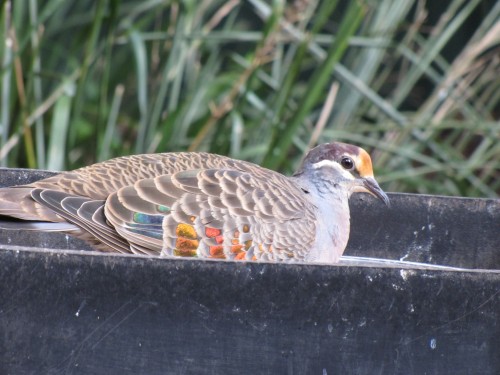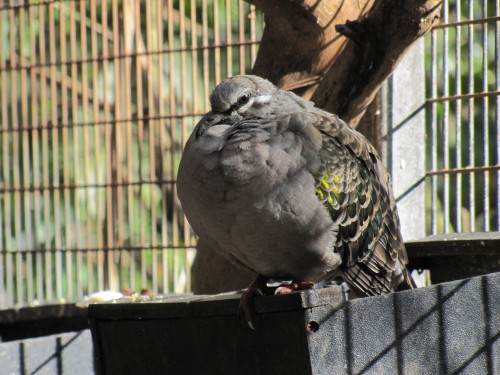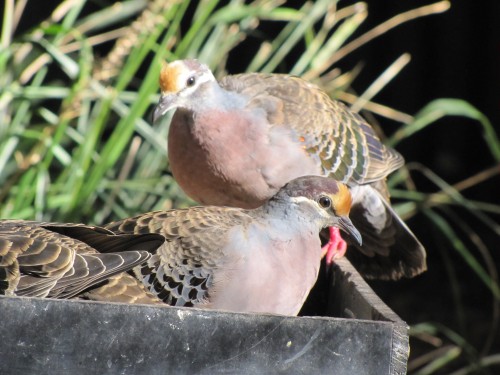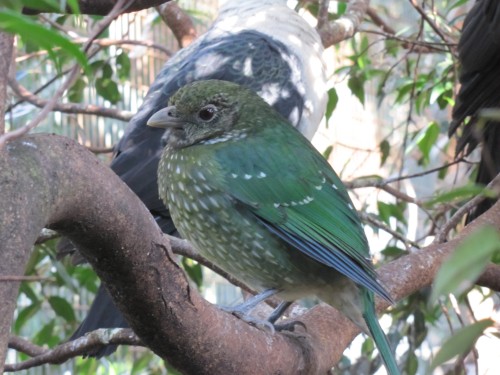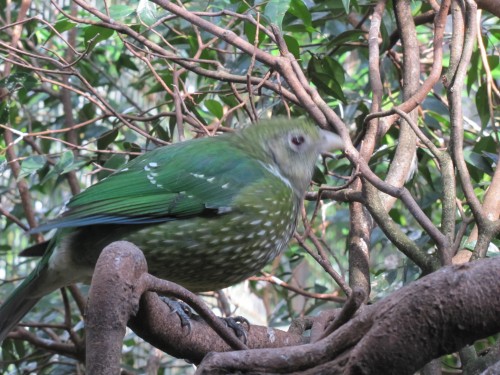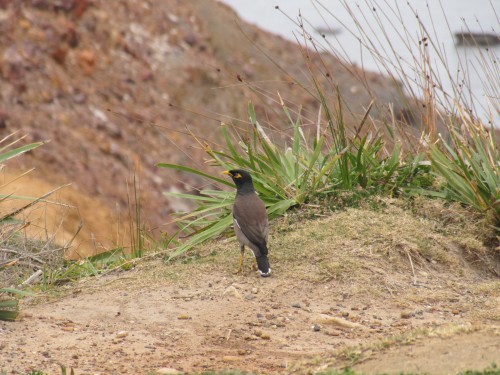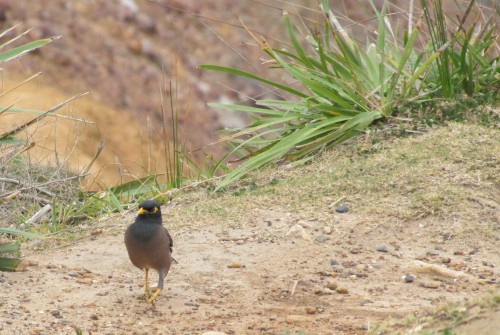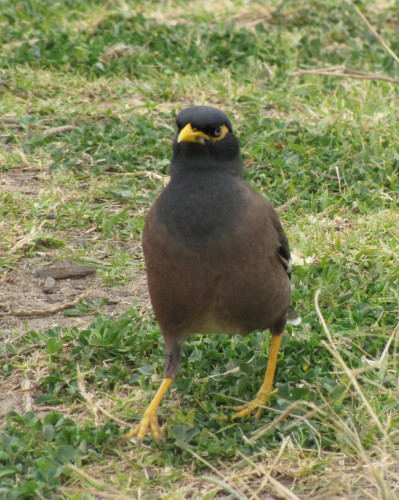Bush Stone-curlew at the Australian Reptile Park
As I was meandering through the aviary section on our recent family visit to the Australian Reptile Park north of Sydney, I managed to get this interesting photo of a Bush Stone-curlew.
This individual is obviously quite relaxed near humans, with hundreds passing by its aviary on a daily basis. It fact, its pose almost suggests it is being curious about what I was doing, and came very close to investigate.
Or was it deliberately posing in a provocative way to get my attention?
Further reading:
You can see more photos and read more about this species by clicking on these related articles:
Pigeons and doves
I went for a walk of The Estate this afternoon.
When I say “The Estate”, please understand that we only own a 5 acre (2 hectare) block.
As I passed along the neighbour’s fence, I glanced over into the area in front of their house. On the grass I saw six birds feeding on the grass: 2 Crested pigeons, 2 Spotted Turtledoves and 2 Peaceful doves, all within about 2 or 3 metres of each other.
This is the first time I’ve seen all 3 species feeding in such close proximity to each other.
Note: I didn’t have my camera with me, so the photos shown today were taken on another occasion.
Bronzewing Pigeons at the Australian Reptile Park
The Common Bronzewing Pigeon is a widespread species in the mallee areas of South Australia where I live, as well as being relatively common throughout its range where suitable habitat exists. It is scarce in the drier parts of the continent.
The photos shown in today’s post were taken on a recent family visit to the Australian Reptile Park near Gosford north of Sydney. These birds were not wild birds but individuals kept in one of the aviaries there. I feature them here because of their beautiful colours.
The bird immediately below this text is not as colourful. It could be a juvenile, or the lack of colour could be the angle of the sun on the feathers. It looks more fluffed up than normal; it was a very cold day.
The prominent yellow-buff colouring on the males in the top and bottom photos is particularly striking, something I haven’t observed in the natural environment. In their natural habitat they tend not to sit nicely like these in one of the walk through aviaries in the reptile park. I usually just see a blurred shape of a bird fast disappearing into the distance.
Green Catbird at the Australian Reptile Park
The Green Catbird is a species I have only seen on a handful of occasions in the wild. The bird shown in the photo above was taken in one of the walk-through aviaries at the Australian Reptile Park near Gosford, north of Sydney. We recently visited the park on a family outing with our grandchildren.
The Green Catbird gets its name from its cat-like call. The green part of the name is obvious! The species is one of two catbirds in Australia, the other being the Spotted Catbird which lives in far north coastal Queensland, a species I have yet to see. Green Catbirds on the other hand are found along coastal areas of southern Queensland and eastern New South Wales.
Catbirds inhabit rainforests where they feed on fruit. They are known to raids fruit trees in orchards and gardens.
This is not a minor threat
Yesterday I wrote about a pleasant time my wife and I had visiting Long Reef Point north-east of Sydney CBD. One small, disturbing element of our visit was the number of Common Myna birds in the locality. This introduced pest species is quite a threat to our native bird species, competing directly with them for nesting sites and food. Many people are also annoyed by their strident calls.
The particular individual shown in today’s sequence of photos seems to have taken a dislike to me – or my camera – and appears to be advancing towards me in a threatening way. I am pleased that it caused me no harm and left my camera intact.
